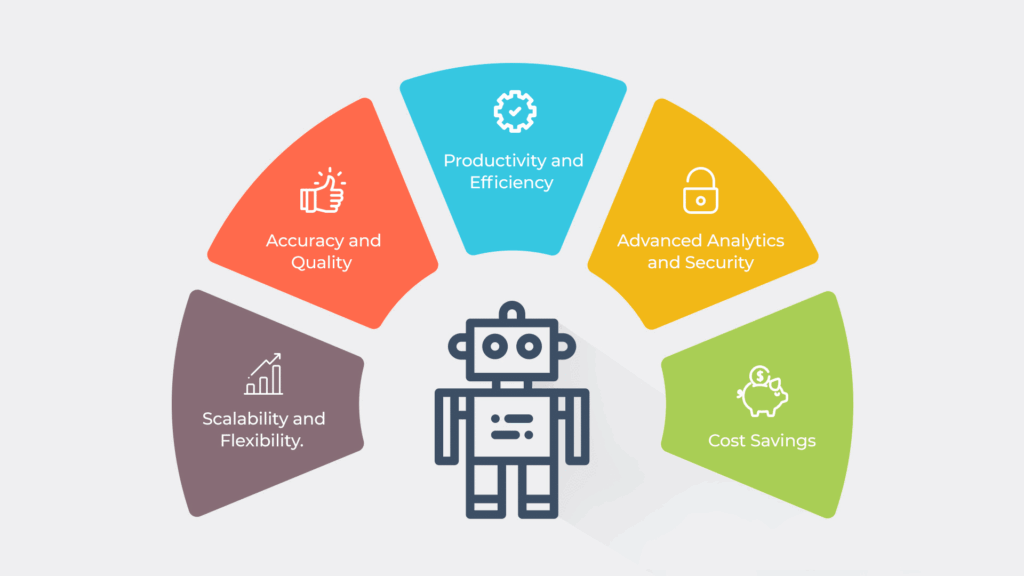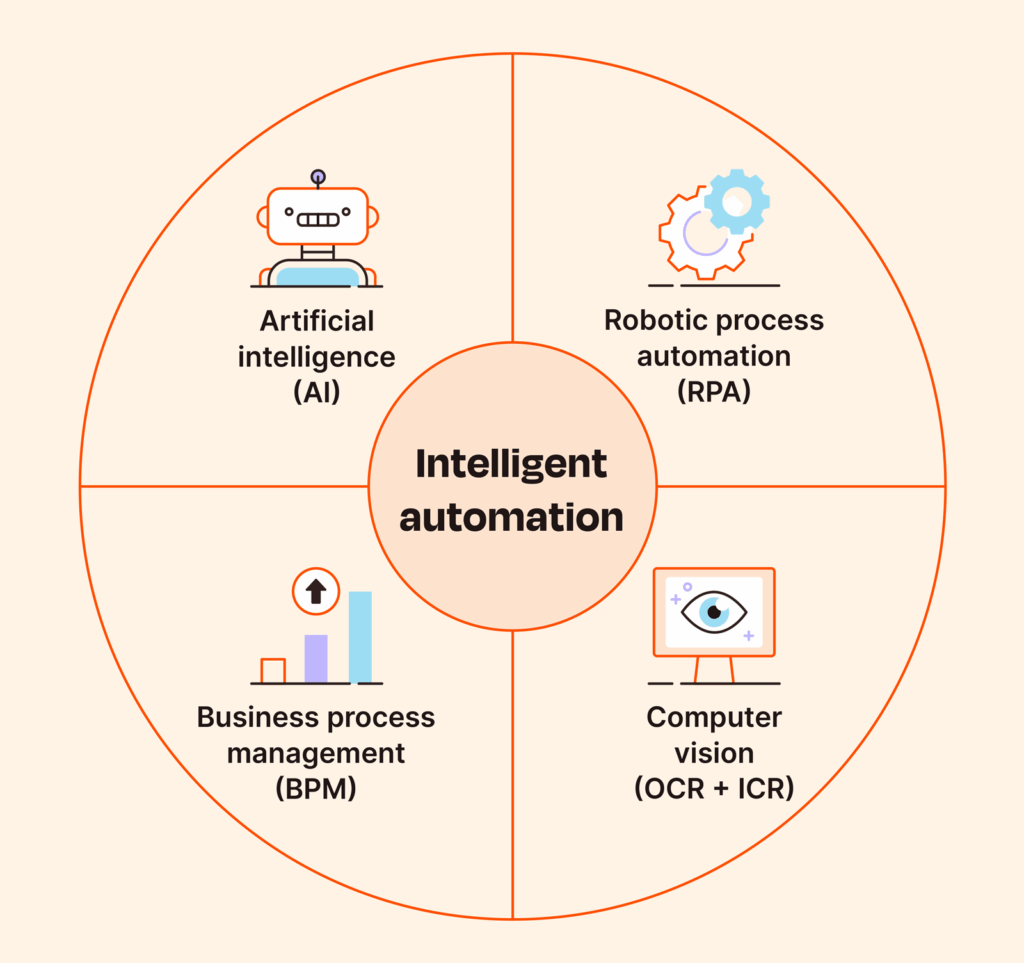In today’s highly competitive corporate world, the goal is not only to grow but to grow efficiently. For many businesses, scaling up often results in increased expenses, stretched resources, and operational bottlenecks. However, by 2025, forward-thinking firms will be turning to automation as a solution to this challenge.
Businesses may grow operations, increase productivity, and improve accuracy by embracing technology such as Robotic Process Automation (RPA) and intelligent workflows—all while keeping costs under control.
Automation is changing how modern firms work by streamlining essential processes, increasing productivity, and lowering operational costs. Organizations can achieve high performance and long-term success by incorporating automation into core tasks. Here’s how automation is changing the face of today’s business climate.
1. What is business process automation?
Automation entails employing technology to execute repetitive tasks with minimal human participation. It encompasses everything from simple rule-based operations to complex decision-making enabled by AI.
In particular:
- RPA (Robotic Process Automation) simulates human actions in digital systems to carry out routine operations.
- Intelligent workflows employ artificial intelligence and machine learning to manage more sophisticated, decision-based procedures.
These technologies, when combined, allow enterprises to function at scale without having to raise their labor or expenses.
2. Robotic Process Automation (RPA): The Digital Workforce
RPA is one of the most rapidly increasing categories of enterprise automation. It entails utilizing software “bots” to complete repetitive activities such as data entry, document processing, or system updates faster and more accurately than humans.

Natural language processing common RPA use cases:
- Invoice processing in financial departments.
- Customer Onboarding in Banking and Insurance
- Data migration and coordination between platforms for HR procedures like payroll and leave management.
Companies can use RPA to liberate staff from boring duties and allow them to focus on higher-value jobs such as strategy, innovation, and customer interaction.
3. Intelligent Workflows: Smarter Automation with AI.
While RPA focuses on rule-based activities, intelligent automation incorporates cognitive capabilities, allowing systems to learn, adapt, and even make data-driven judgments.
Example of intelligent workflows:
- Chatbots that interpret and address consumer concerns using Natural Language Processing (NLP).
- Predictive analytics for optimizing supply chains and detecting fraud
- Intelligent document processing that extracts and classifies unstructured data from PDFs, emails, and photos.

These AI-driven workflows take automation to the next level, allowing systems to think and behave like humans, but faster and more consistently.
4. The Benefits of Automation in 2025
Automation is more than just a technology improvement; it is a business strategy. Here’s how it can help you increase operations while keeping costs under control:
| Benefit | Impact |
| Cost Reduction | Eliminate manual labor and decrease errors. |
| Operational Efficiency | Complete work quickly and around the clock. |
| Scalability | Handle higher volumes without hiring more staff |
| Improved Accuracy | Minimize human error in critical processes |
| Compliance | Ensure regulatory tasks are executed consistently |
Whether you automate the back office or customer-facing activities, the cost savings and performance improvements are clear.
5. Real-World Use Cases Across Industries.
Automation is not limited to any specific industry. Here’s how several industries are benefiting:
- Retail: Automating inventory changes and personalized marketing.
- Healthcare: Simplifying appointment scheduling and insurance claims.
- Manufacturing: Monitoring machine performance and predictive maintenance
- HR & Admin: Automating onboarding, resume screening, and performance reviews
- Finance: Reconciling accounts, generating reports, and detecting anomalies
These examples highlight the universal appeal of automation across business functions.
6. Getting Started with Automation
Successful automation starts with identifying high-volume, rule-based, and repetitive tasks. Once mapped, businesses can prioritize based on ROI and ease of implementation.
- Assessment—Analyze workflows and identify automation opportunities
- Design—Create process blueprints and automation logic
- Implementation—Deploy RPA bots or AI models
- Optimization—Monitor performance and refine over time
Whether you’re starting small or looking to automate end-to-end operations, we tailor solutions to your needs.
Conclusion:
Scale Smarter, Not Harder
In 2025, growing your business does not have to imply increasing your spending. With the appropriate automation plan, you can increase speed, accuracy, and agility while keeping operational expenses under control.
Smarter Business with Automation
Automation is the foundation of a more intelligent and efficient company environment. Organizations can create scalable solutions that deliver real, measurable value by combining Robotic Process Automation (RPA), intelligent automation, and enterprise technology.

